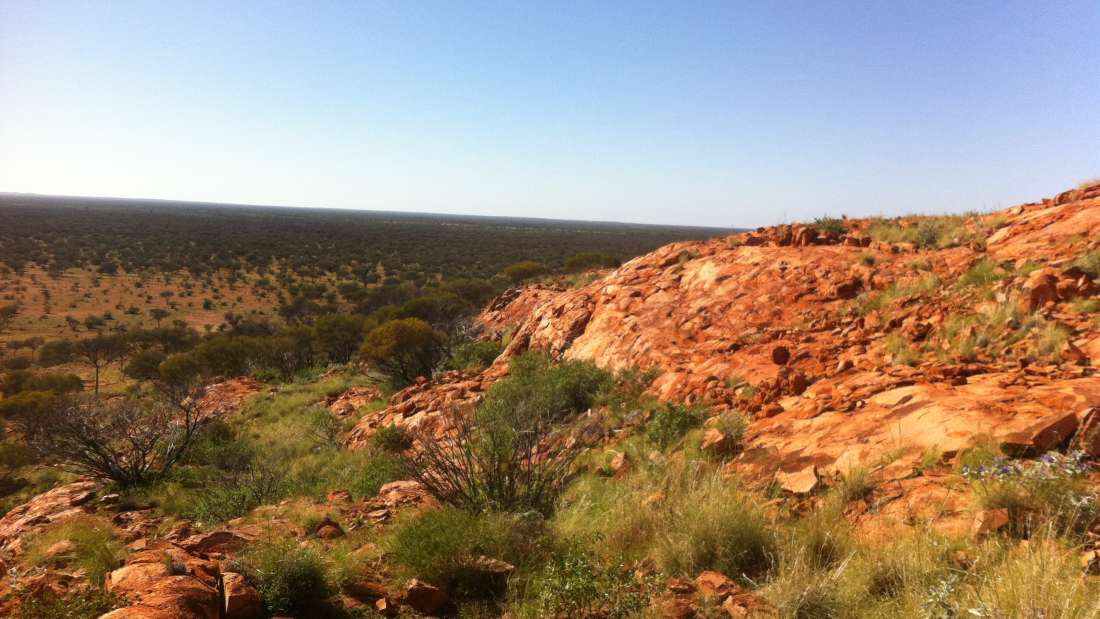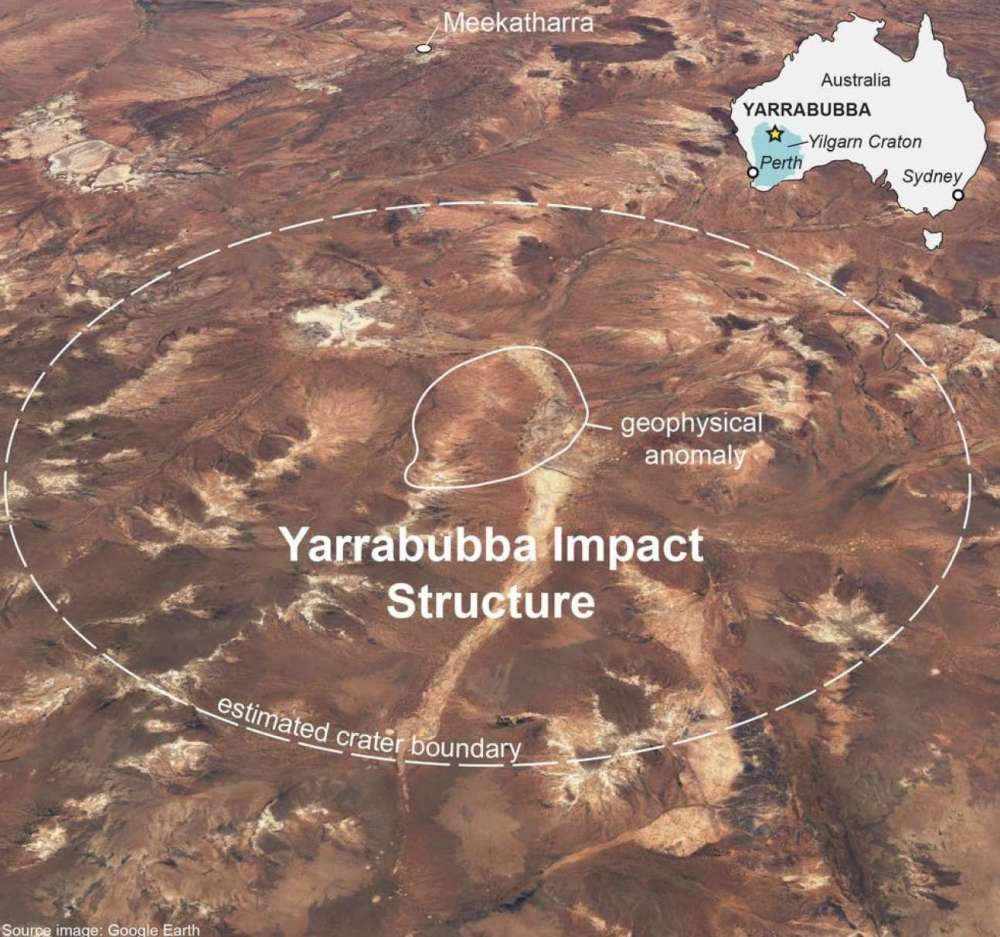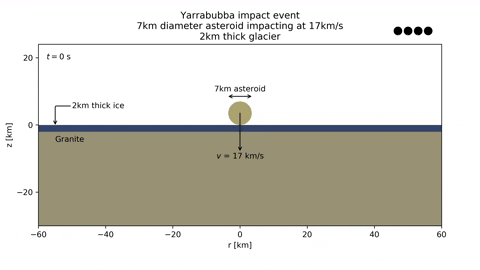O OVGA é um Centro de Ciência que desenvolve atividade de investigação aplicada e de divulgação científica na área da Vulcanologia, da Sismologia e da Geotermia.
Notícia -A A +A
This Is The Oldest Known Impact Crater On Our Planet, New Research Reveals - Notícia OVGA 23-01-2020

The remais of the Yarrabubba crater in the outback of western Australia.
Image: NASA’s Johnson Space Center
Scientists have confirmed our planet’s oldest asteroid impact site: The Yarrabubba crater, a 70-kilometer (44 miles) scar on Earth's surface created by a colossal asteroid smashing into what is now Australia over 2.2 billion years ago.
Intriguingly, this event might have even played a vital role in the history of the planet and its future inhabitants. The meteorite impact coincides with a time when the planet was “recovering” from an ice-covered stage known as "Snowball Earth”. Could this asteroid have been the violent geological event needed to knock Earth out of this ice age gridlock? Perhaps so, researchers say.
“Snowball Earth ended at almost the same time as the Yarrabubba impact,” study co-author Dr Thomas Davison of Imperial College London said in a statement. “Is this a coincidence, or could the Yarrabubba impact event be an unexpected cause of global climate change?”
The new study, published in Nature Communications, used geological dating to establish the Yarrabubba crater in the outback of Western Australia dates to precisely 2.229 billion years old, confirming its place as the world’s oldest known preserved impact structure.

Image: Curtin University/Imperial College London/Google Earth
Researchers from NASA’s Johnson Space Center, Curtin University in Australia, and Imperial College London collected samples of minerals called zircon and monazite from the Yarrabubba crater. These minerals contain small amounts of uranium, which gradually decays into lead at a known rate. Extremely hot temperatures, such as those seen in a meteorite impact, also result in the minerals losing their accumulated lead, effectively “resetting” the clock. By measuring the isotopes of uranium and lead, the team was able to work out how much time has passed since the impact.
Nowadays, the Yarrabubba crater can scarcely be seen with the naked eye. However, it’s possible to work out the likely event that occurred by looking at the geology of the area and its size. By this study’s workings, the impact would have involved a 7-kilometer-wide (4.3 miles) asteroid striking an ice sheet between 2-5 kilometers (1.2 to 3.1 miles) thick at 17 kilometers (10.5 miles) per second.

Image: Thomas Davison/Imperial College London
Simulated models suggest the asteroid strike could have pushed over 100 billion tonnes of water vapor into the atmosphere. Acting as a greenhouse gas, the influx of water vapor would trap heat in the stratosphere and warm up the planet, potentially even kicking Earth out of its “deep freeze.” This idea is merely speculative for now, however, as many questions still hang over the "Snowball Earth” theory and how it came to an end.
Equally, it’s important to remember that the Yarrabubba crater is only the oldest known impact site that’s left a physical signature on Earth’s surface. It’s possible that other, older craters exist, but have since become swallowed up by tectonic plates or swamped by volcanic geology. For example, earlier this month, a study found that a 780,000-year-old meteorite impact site was hiding beneath a volcanic field in modern-day Laos.
However, knowing more about the early impacts on Earth help us understand more about the evolution of our planet, and the role climate played in its history.
Fonte: iflscience.com (22-01-2020)
